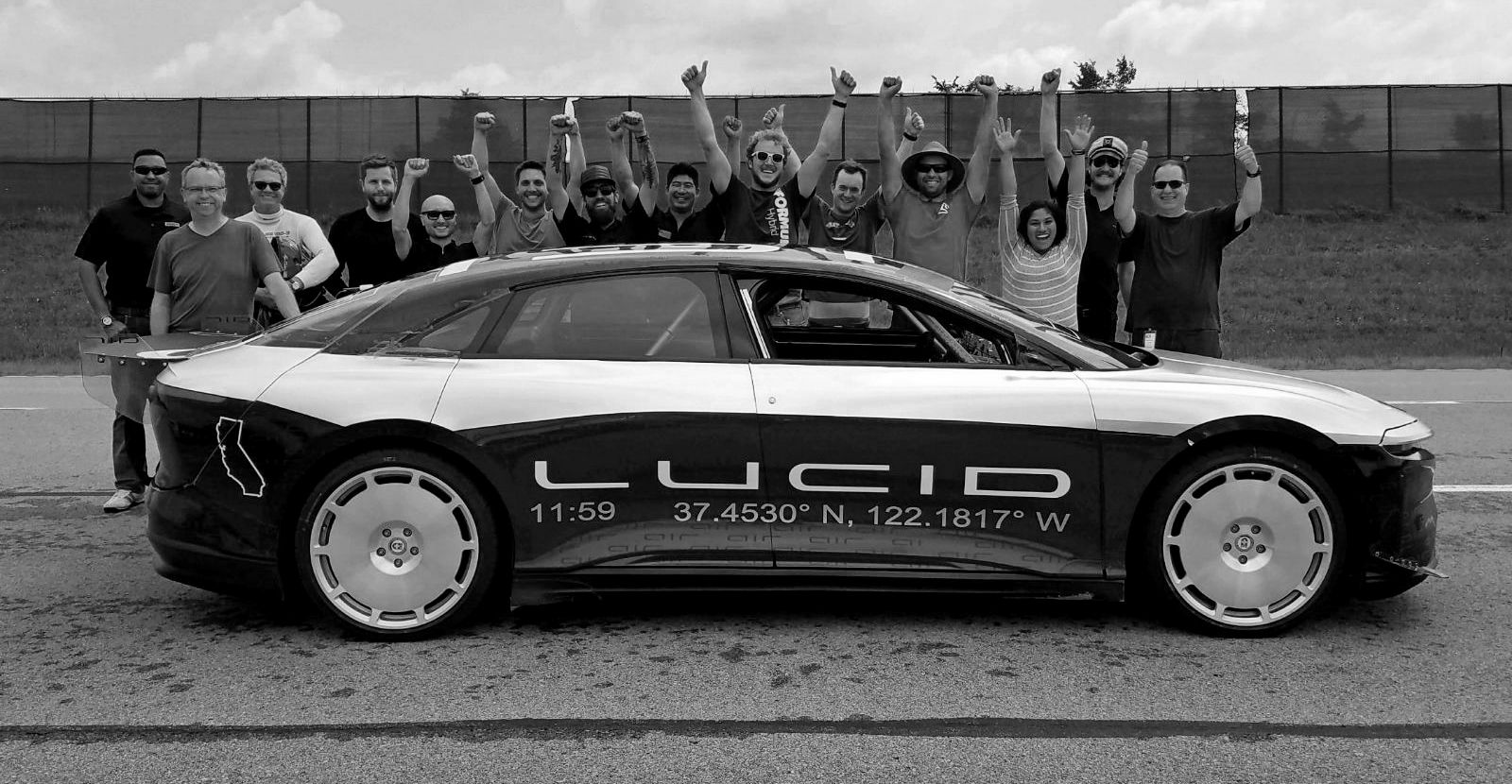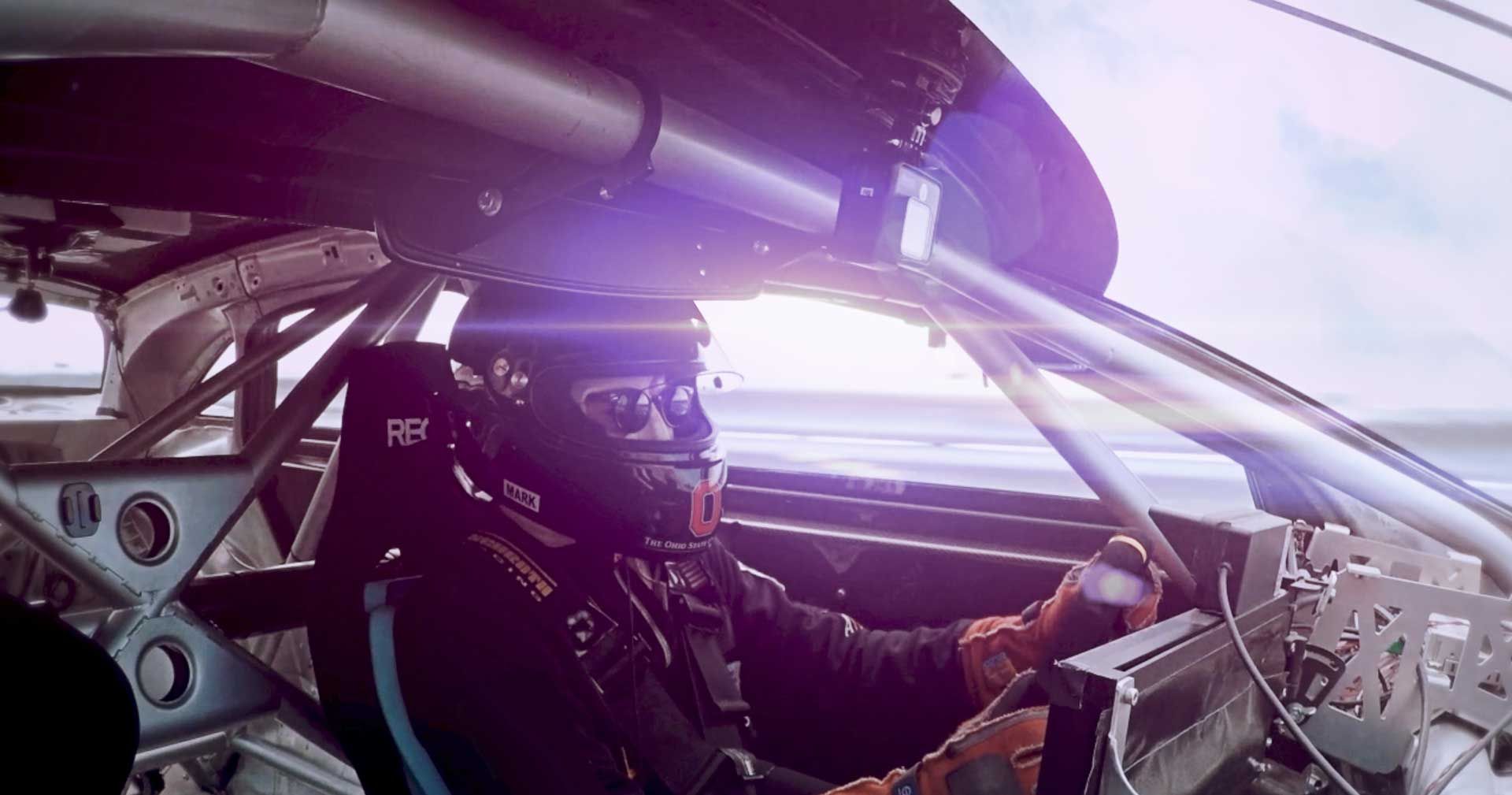If there’s anything that the electric car market has taught us, it’s that under the right circumstances, electric cars can go fast. Blazingly fast even. The Tesla Model S with its 2.9-second, 0-to-60-mph acceleration time has proven that. Financial problems notwithstanding, the Faraday FF91 has also shown its performance mettle, most recently when it posted an impressive finish time of 11:25.082 at the Pikes Peak International Hill Climb. If anybody needs more proof of the capabilities of these new wave electric cars, Lucid’s Air electric sedan makes an incredible case for itself after posting a top speed of 235.44 mph during a recent high-speed test at Ohio’s Transportation Research Center.
This is not a trick, nor is it a fabrication of numbers. Lucid actually achieved this top speed with the Air electric sedan. It’s an impressive feat considering that only a handful of cars in the world can hit top speeds in the vicinity of what the Air was able to pull off. The high-speed run took place just a few months after Lucid clocked the Air hitting a software limited top speed of 217 mph back in April 2017. With data from that run showing that the electric sedan was still capable of pushing itself to the limit, Lucid went back to the garage to make some improvements on the car, including updating the car’s air suspension, fitting aerodynamically efficient wheels, and most important of all, removing the car’s speed limiter. With these modifications in place, Lucid went to back to the banked oval of Ohio’s Transportation Research Center and posted what could very well be the highest top speed of any electric car today.
Continue after the jump to read the full story.
It’s an incredible achievement, but don’t get too excited
Make no mistake; what Lucid accomplished with the Air is downright staggering. It really is. But we’ve learned our lesson with start-up electric car makers. As promising as Lucid is today, there’s no guarantee that it will be where it is tomorrow. Just take a look at Faraday Future. The young company has moved from glorious hope to downright despair. That’s not to say that I think Lucid will suffer the same fate, of course. (Lord knows I want these companies to succeed more than anything else.)
But my days of expecting them to breakthrough and become important figures in the future of the auto industry are long gone. I’m still not at the point of becoming a skeptic, but my guard is definitely up, as it should have been from the beginning.
It doesn’t help that for all the success the Air has had in its test runs, one glaring caveat is keeping it from becoming a full-fledged reality. That caveat? Lucid still has no production facility. It’s already said that it plans to build one in Arizona, but it also needs the funds to actually pay off the costs that come with building a factory. To make things dicier, The Motley Fool reported in April that Lucid was still in the market for funding amounting to $700 million. Last I checked, $700 million doesn’t grow on trees.
It’s one thing to develop a prototype electric car that can blow people away – the Faraday FF91 did that. But, it’s another thing entirely to have the money to actually build the cars. (Again, look at Faraday.) That’s a problem Lucid needs to solve before people can start getting excited about the Air electric sedan. It’s already proven itself numerous times to be a performance juggernaut. But, until there’s a place for Lucid to actually build the car, all these record top speed times mean very little in the grand scheme of things.
References
Read our full review on the Faraday Future FF 91.


